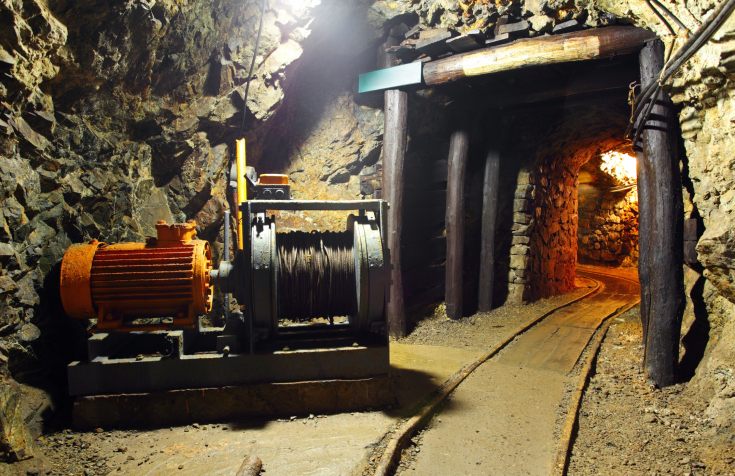Commodities & Metals
Outlook 2013: Turnaround Unlikely in Base Metals
Published:
Last Updated:

When Freeport McMoRan Copper & Gold Inc. (NYSE: FCX) agreed to buy McMoRan Exploration Co. (NYSE: MMR) and Plains Exploration & Production Co. (NYSE: PXP) for total consideration of $20 billion, the deal was criticized from a number of standpoints, one of which was that Freeport’s move indicated significant weakness in the copper business. And it is true that copper is off its highs in the first half of 2011, but the red metal has made a significant comeback in pricing, from a low of around $3.30 a pound in May to above $3.60 in December.
Like other base metals such as aluminum and iron ore, copper is captive to a growing economy. In the past few years, the lion’s share of global economic growth has come from emerging markets, particularly China, India and Brazil. With China’s slowing growth, particularly in construction spending in 2012, it is no wonder that base metals prices have been soft.
Copper pricing may have gotten a boost earlier this week, though, following a decision by the Securities and Exchange Commission to allow J.P. Morgan Chase & Co. (NYSE: JPM) to create an exchange-traded fund (ETF) backed by physical copper. Whether that fund or other funds backed by base metals will get off the ground remains to be seen. But if demand is high enough for a copper ETF, that could do nothing but raise prices for the metal.
In response to the slowing economy and the lower prices, mining companies, like Freeport and BHP Billiton PLC (NYSE: BHP) have looked to boosting their investment in the one commodity that seems invariably to offer profits: oil. The other thing to remember about mining companies is that scale matters a lot, and no matter how big the firm might be, even bigger is always thought to be better. In 2008, BHP tried to acquire Rio Tinto PLC (NYSE: RIO) for $147 billion. When that failed, BHP tried to nab Potash Corp. of Saskatchewan (NYSE: POT) for $39 billion. One of the big deals was finally approved last month when Xstrata shareholders agreed to a $31 billion buyout by Glencore International.
Trying to predict which of the mining firms will try to swallow another is a fool’s game. But if China is serious about its plan to grow gross domestic product by focusing on urbanization (more construction) and domestic spending rather than exports, demand for copper, iron ore and aluminum likely will grow. Add to that the fact that China’s inventories of iron ore are quite low, and demand for the critical ingredient in steel making could rise sharply from near its three-year low. Rising costs could crimp asset prices and lead to more buyouts and takeovers as global growth continues to be sluggish.
One company that does not think growth is on the table for steel in 2013 is ArcelorMittal (NYSE: MT), the world’s largest steel maker. The company has idled 11 of 25 European furnaces and would have closed two permanently if the French government had not resisted. The company’s goal for 2013 is not revenue growth, according to founder and CEO Lakshmi Mittal, but “a company that is strong and adapted to economic realities.”
BHP, Rio Tinto and Brazil’s Vale S.A. (NYSE: VALE), all major producers of iron ore, are getting some help from improved demand from China, but none expects a sharp and lasting rise in prices. Fitch Ratings said last month that it expects mining costs to continue rising while prices remain stagnant. Nowhere is the damage more noticeable than among aluminum producers.
Early in 2012, Rio wrote down $9 billion in aluminum assets, BHP cancelled plans to build a new aluminum smelter in Congo and Alcoa Inc. (NYSE: AA), Norsk Hydro and BHP announced production cutbacks totalling 1.3 million metric tons in 2012. The situation is little improved since then.
Alcoa, though not a likely acquisition target, could be broken up. A report from Bloomberg in October suggested the company may be worth as much as 63% more if broken into bits and sold. Moody’s this morning put the company’s debt on review for a possible downgrade to junk. That says pretty much all there is to say about the aluminum business.
Growth in the developed world has stalled as nations continue to deal with a variety of financial crises and consumers continue to deleverage. Growth in emerging markets is slowing in an effort to keep inflation in check and businesses cannot expand. These conditions will make 2013 a difficult year for producers of industrial metals.
As for other sector outlook pieces from 24/7 Wall St. for 2013:
Paul Ausick
The thought of burdening your family with a financial disaster is most Americans’ nightmare. However, recent studies show that over 100 million Americans still don’t have proper life insurance in the event they pass away.
Life insurance can bring peace of mind – ensuring your loved ones are safeguarded against unforeseen expenses and debts. With premiums often lower than expected and a variety of plans tailored to different life stages and health conditions, securing a policy is more accessible than ever.
A quick, no-obligation quote can provide valuable insight into what’s available and what might best suit your family’s needs. Life insurance is a simple step you can take today to help secure peace of mind for your loved ones tomorrow.
Click here to learn how to get a quote in just a few minutes.
Thank you for reading! Have some feedback for us?
Contact the 24/7 Wall St. editorial team.